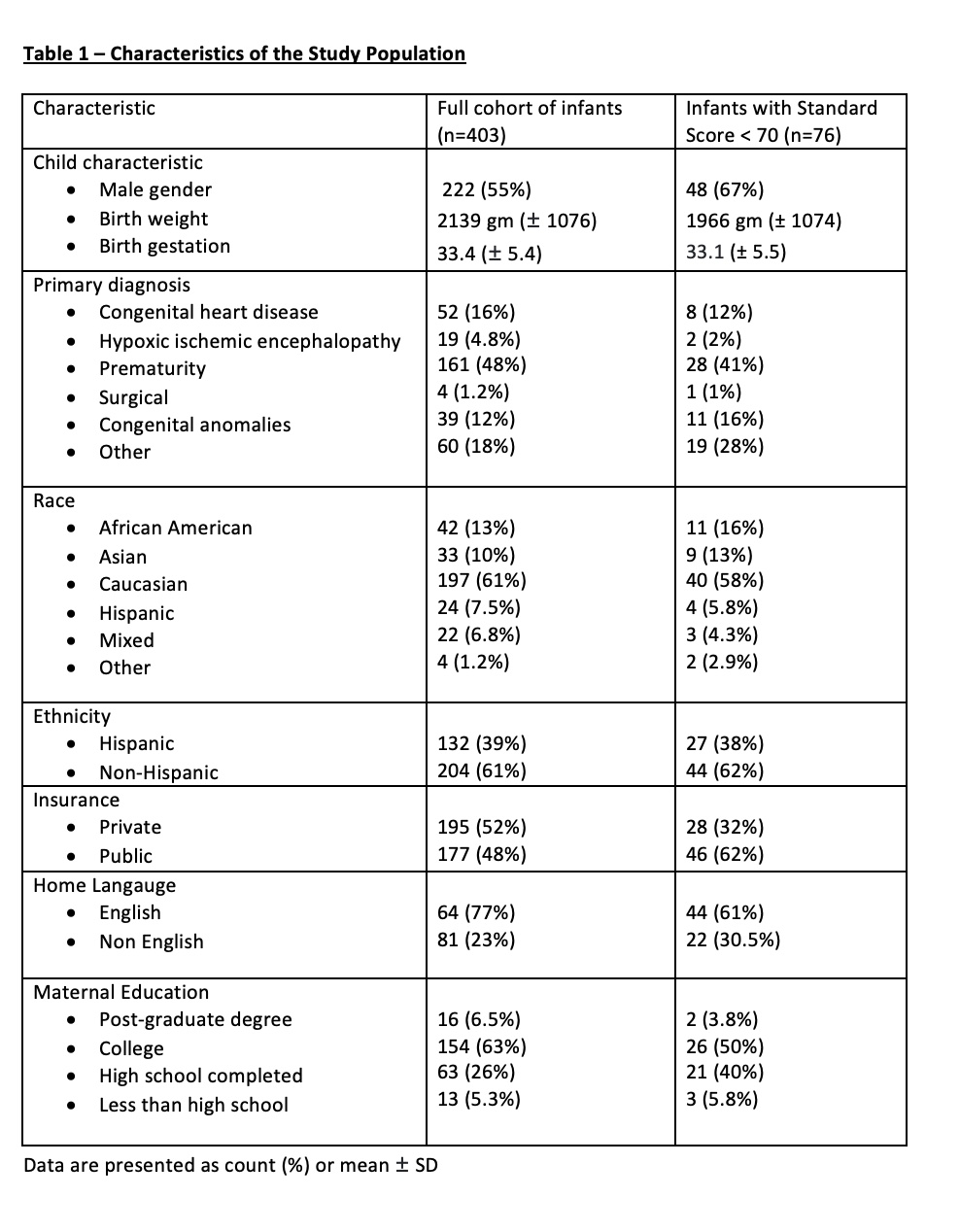Developmental and Behavioral Pediatrics: Other
Developmental and Behavioral Pediatrics 6
701 - Pattern of utilization of Early Intervention Services in a cohort of High-Risk infants in NICU follow up clinic
Publication Number: 701.308
- SI
Sai Iyer, MD (she/her/hers)
Assistant Clinical Professor
University of California, Los Angeles David Geffen School of Medicine
University of California Los Angeles
Los Angeles, California, United States
Presenting Author(s)
Background:
High-risk infant follow up (HRIF) programs play a key role in ensuring developmental follow up and referral to early intervention (EI) services for infants discharged from the NICU. A better understanding of the patterns of referral and connection to EI will help identify opportunities for improvement of care coordination.
Objective:
This study investigated the pattern of EI enrollment and predictors of being connected with EI at the time of the first HRIF visit (V1).
Design/Methods:
A retrospective chart review of the cohort of 403 infants attending the HRIF clinic from 2012-2017 was done. Information about sociodemographic characteristics, neonatal complications and developmental assessments was gathered from the electronic medical record. Logistic regression was done to identify factors predicting receipt of EI services.
Results:
The demographic characteristics of the study population are shown in Table 1. Majority of the study population was male, English speaking, Caucasian and non-Hispanic with private insurance. Prematurity was the most common qualifying diagnosis. 121 babies (30%) attended all 3 standard visits. No significant associations were noted between NICU/ medical or sociodemographic factors and attending all 3 visits. The average corrected age of the infants at V1 was 7.4 months (± 5.9 standard deviation).
92/303 (30.3%) families reported receiving EI services at V1. Logistic regression analysis showed that NICU length of stay (LOS) was significantly associated with receipt of EI. None of the socio-demographic factors showed significant associations.
Of the 305 infants that had developmental testing in V1, 76 (24.9 %) presented with severe developmental delay (defined as Composite Score < 70 in any domain). NICU LOS [OR 1.03, 95%CI 1.01-1.05] and Spanish as primary language [OR 2.73.3, 95% CI 1.06-7.06] were associated with severe developmental delay.
The developmental test scores were significantly lower for those who were receiving EI compared to those who were not at V1 (Figure 1). 79/163 (48.5%) infants who presented with developmental delay (Composite score < 85) were not receiving EI at V1.
Conclusion(s):
The HRIF clinic serves a varied population of infants who are at risk of neurodevelopmental delays. Most infants are not receiving EI services at the time of V1 and almost half of those with developmental delay not receiving EI services. Babies with longer NICU stay and from Spanish speaking families tend to present with severe developmental delay. Additional support to these families may be helpful in optimizing the developmental outcome of their infants.

.jpg)
